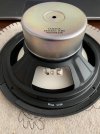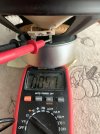richardbruce
Member
- Joined
- Jun 22, 2022
- Messages
- 29
- Likes
- 9
Yes to the question about Yamaha's factory crossover specs."Can anyone tell me if these crossovers are appropriate? Yamaha says the factory "crossovers" are at 2.5kHz and 8kHz. The ones I'd like to install are 850kHz and 4500kHz"
First lets clear this, does yamaha say 2.5khz and 8khz and you say you like to shift to 850Hz and 4.5 khz???
Couse if you like to do this, you max power gets reduced.
About that change in the xover maybe you better ask in the diy corner.
Yes, those are the frequencies of the crossovers I'm looking at.
I'm not worried about the power right now. I almost never push my speakers hard, especially if I'm unsure how much overhead I have. Yamaha specs state these loudspeakers are rated for 140w peak and my amp is 100wpc. But I don't use more than about 10% of that in my apartment. Neighbors would complain. Hell, they hear my 15w guitar amp!
I'll check out the diy corner. I'm also looking at various crossover calculators and punching in some numbers.
Thanks!



